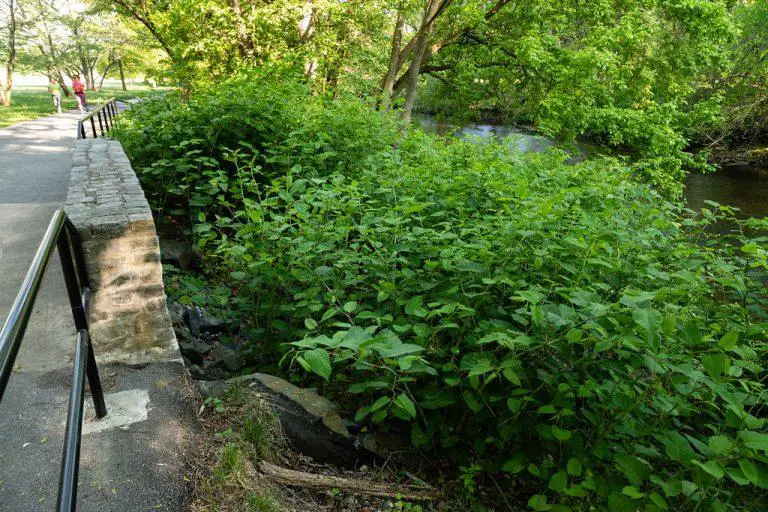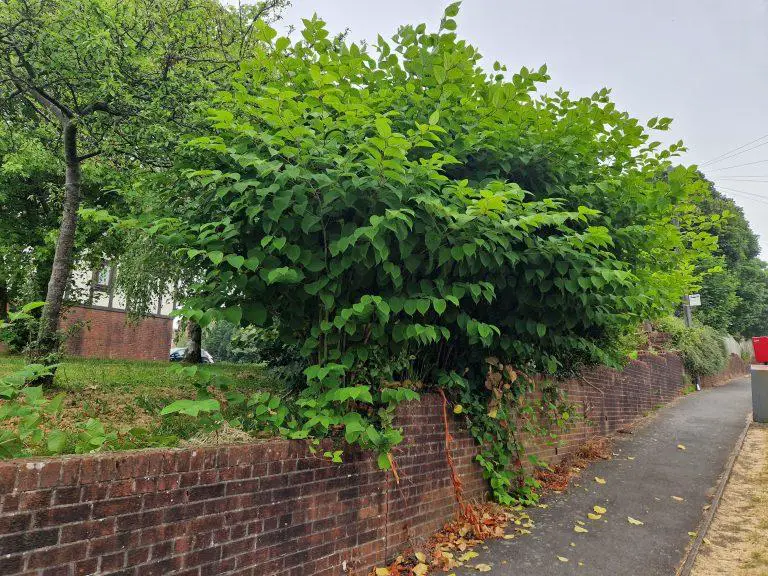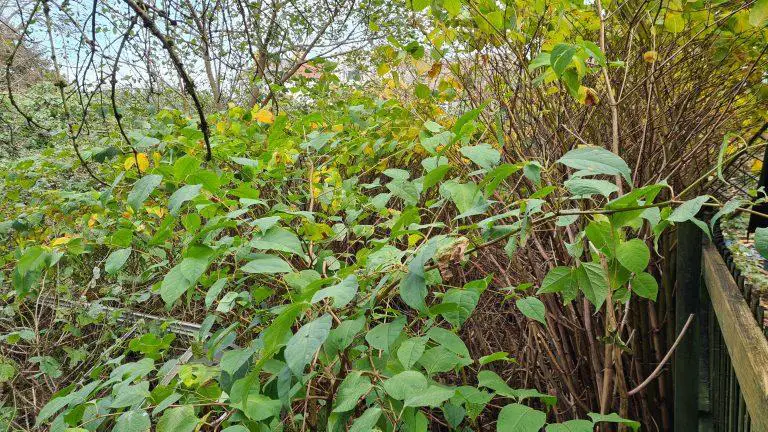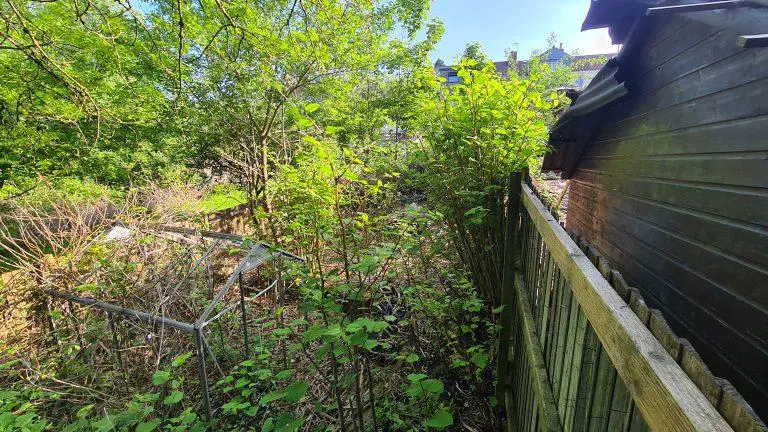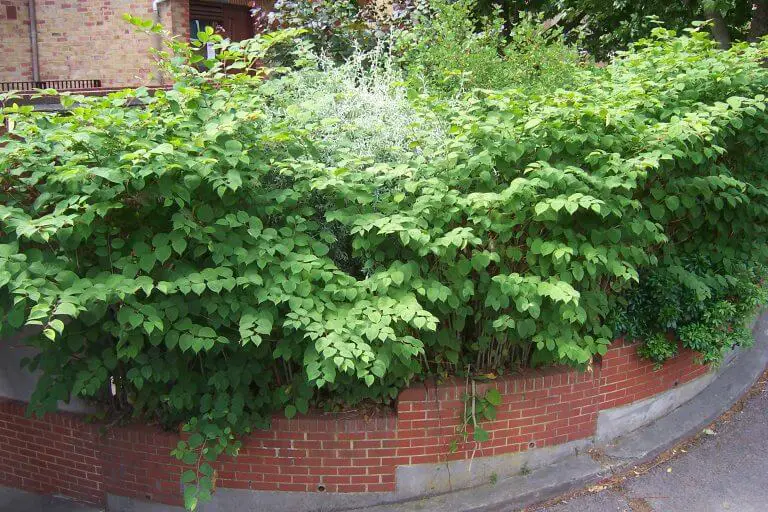Discovering what plants can be mistaken for Japanese knotweed in the UK is a regular basis. A lot of people worry about the possible problems of the knotweed while in the real sense, there is nothing they should be worried about!
While these plants do not have all the features of Japanese knotweed, they have enough similarities to cause unnecessary panic. This article describes plants that are commonly mistaken for Japanese knotweed so as to make its identification easier for you.
Plants commonly mistaken for Japanese knotweed
There are several plants that look similar to Japanese knotweed. Unfortunately, this makes its identification challenging. Here are the plants that are commonly mistaken for Japanese knotweed:
1. Bamboo
Similarities
- The bamboo stems have clear nodes like those of the Japanese knotweed. They grow to the same height as knotweed or even taller depending on the climate and soil factors.
- Bamboo can be invasive. It can easily spread to undesired places and can also be challenging to treat using herbicides.
- The crawling rhizomes give rise to rhizomes that grow extremely fast.
Differences
- The bamboo stems are hard and long. They are not easily cut as compared to those of knotweed.
- They have long leaves that are thin and measure up to 45cm
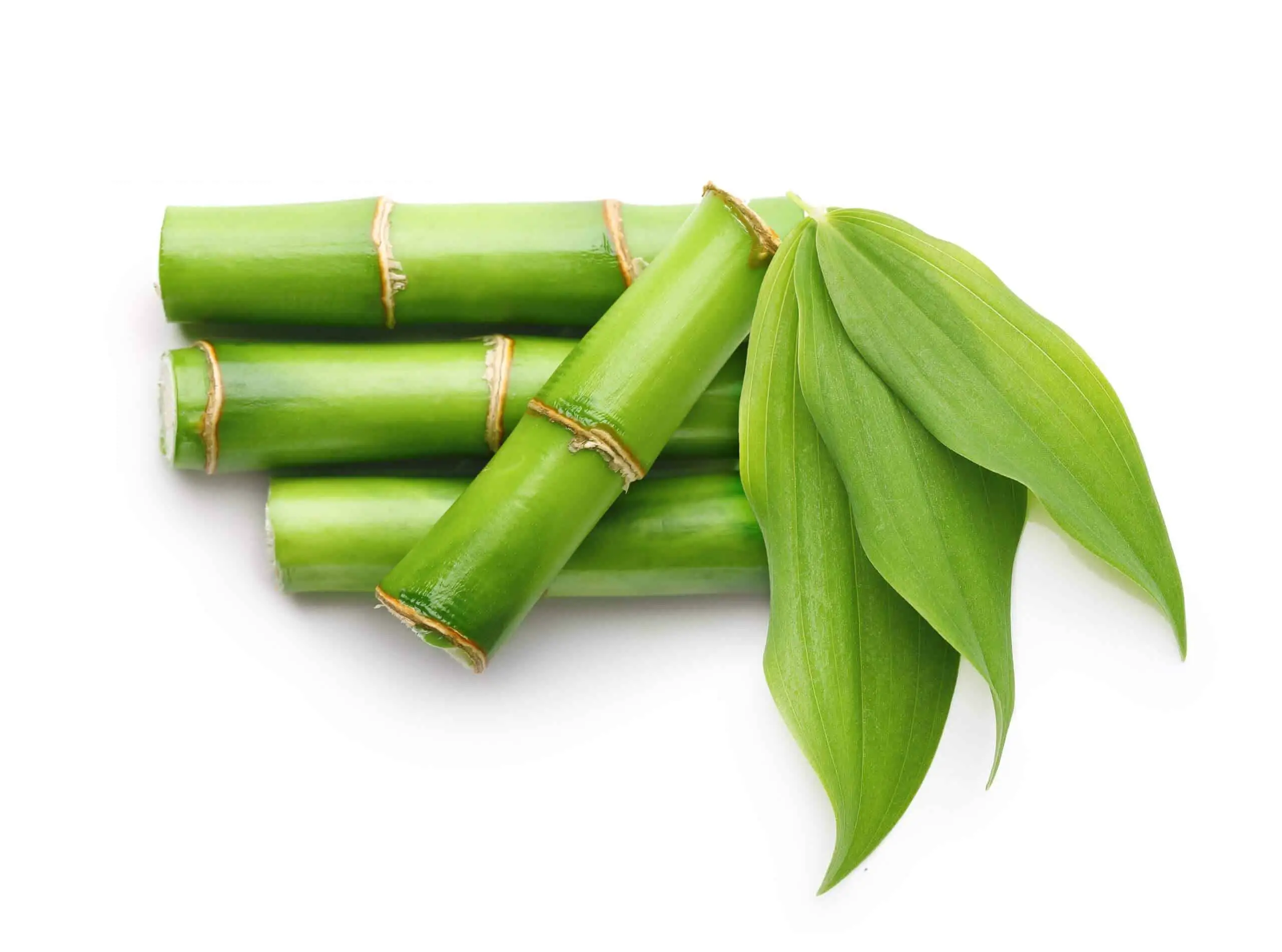
2. Broadleaved Dock (Rumex obtusifolius)
Similarities
- The Broadleaves are in the same family as knotweed. It is not a surprise that it is on this list of plants commonly mistaken for Japanese knotweed.
- Their leaves are arranged alternating on the stems.
- Their flowers appear in spikes such as those of knotweed.
- Their dead stems look similar to those of knotweed during winter.
Differences
- The Broadleaves stems are fluted and shorter than those of the knotweed. They only grow up to 1 meter tall.
- Their stems are not hollow; they have foam–looking piths.
- The leaves are much bigger and form rosettes close to the ground at the base of the stems.
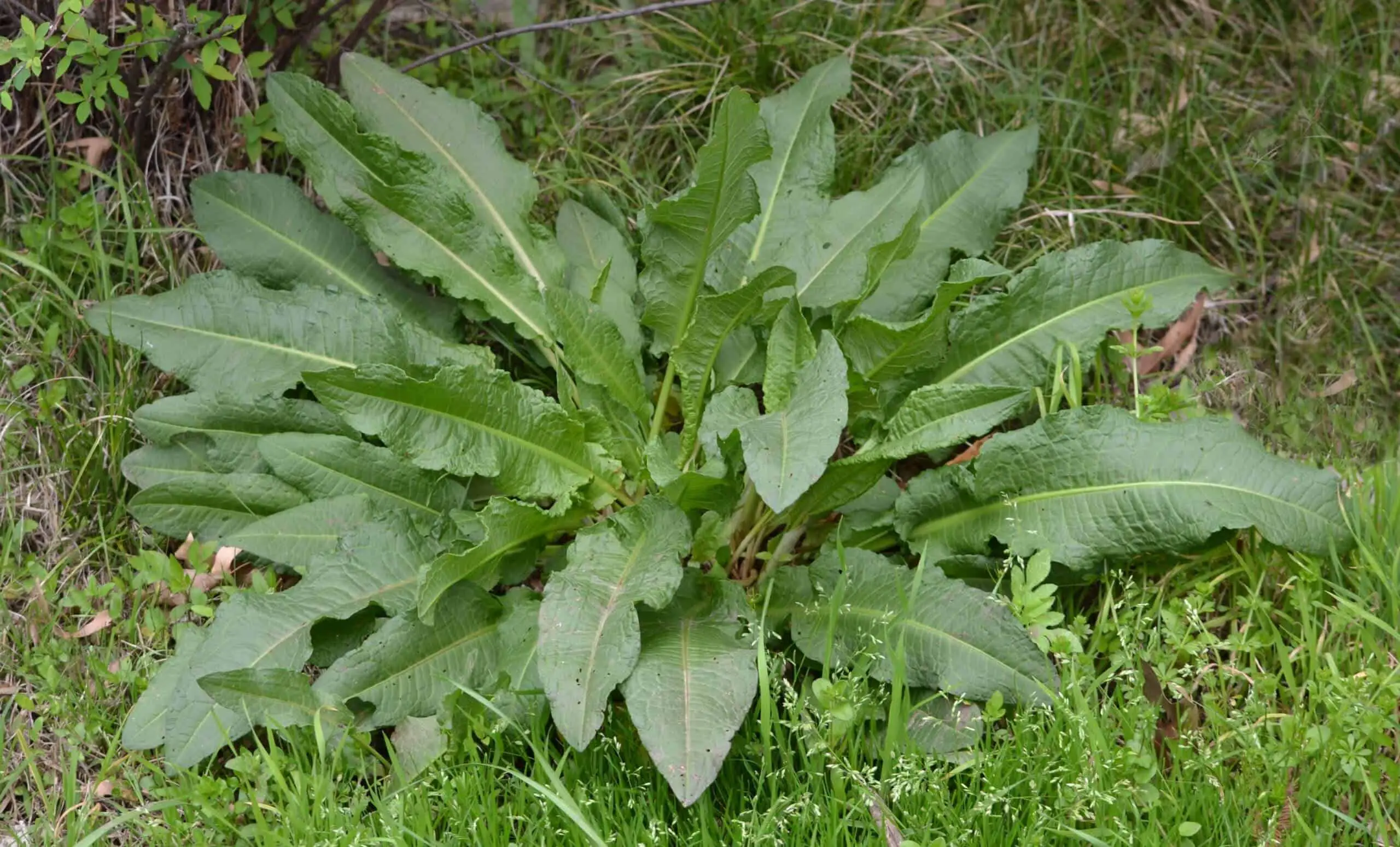
3. Ornamental Bistorts
Similarities
- The ornamental bistorts are mainly planted as decorative garden plants. This plant has stems and leaves that are similar to the Japanese knotweed species. They can be easily mistaken for them especially when flowering.
- Their stems are also hollow and separated into nodes like those of knotweed. The leaves are arranged similar to those of the knotweed.
Differences
- The main difference between these two plants is that the ornamental bistorts are planted by people and do not spread widely. You will find them planted around properties for beautification.
- The flowers come in summer and early autumn. They are in pinkish clusters formed on 8 cm tall sticks.
- Their leaves are quite longer than those of the knotweed; they have marked lobes and appear dense towards the stem.
- The stems of this plant are thinner than those of the knotweed. They are about 70 cm in diameter and 95 cm tall.
- Ornamental bistort comes in varieties, some species will come with dark, arrow-shaped and triangular leaves.

4. Himalayan Balsam(Impatiens glandulifera)
Similarities
- Himalayan balsam is one of the tallest annual plants in the UK; it grows up to 3 meters hence attaining the height of a good number of mature Japanese knotweed.
- The stems are hollow
- This plant is quite invasive and can spread within a short period thus covering large areas, especially near water bodies.
Differences
- The Himalayan plant leaves are arranged opposite each other in an alternating manner.
- The plant has longer leaves and is thinner as compared to those of the knotweed. The leaves have a pinkish mid-rib.
- The flowers appear in late summer, they are usually large and pink.
- The seed pods explode when touched. They appear shortly after flowering.
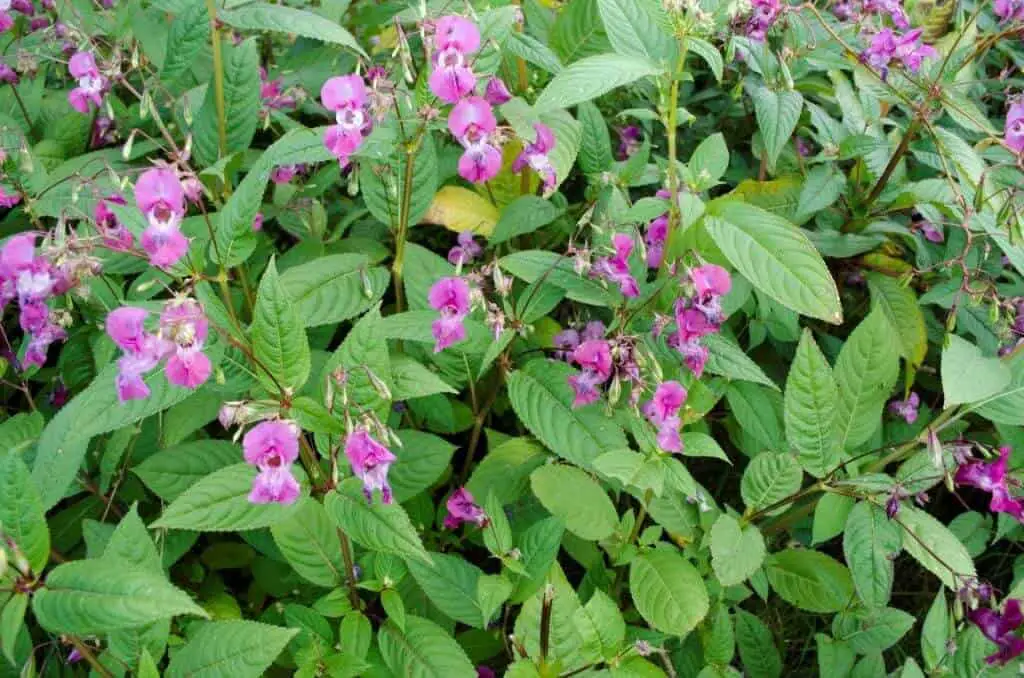
5. Bindweed (Convulvulus arvensis)
Similarities
- The plants have heart-shaped leaves that are similar to those of the Japanese knotweed.
- The leaves are aligned alternating along the stems.
- The plant is invasive; can grow and spread quickly within a short period of time.
Differences
- The Bindweed is a climbing plant that attains its height by twisting around stems of other nearby plants.
- The pinkish flowers appear in summer and are large as compared to those of knotweed.
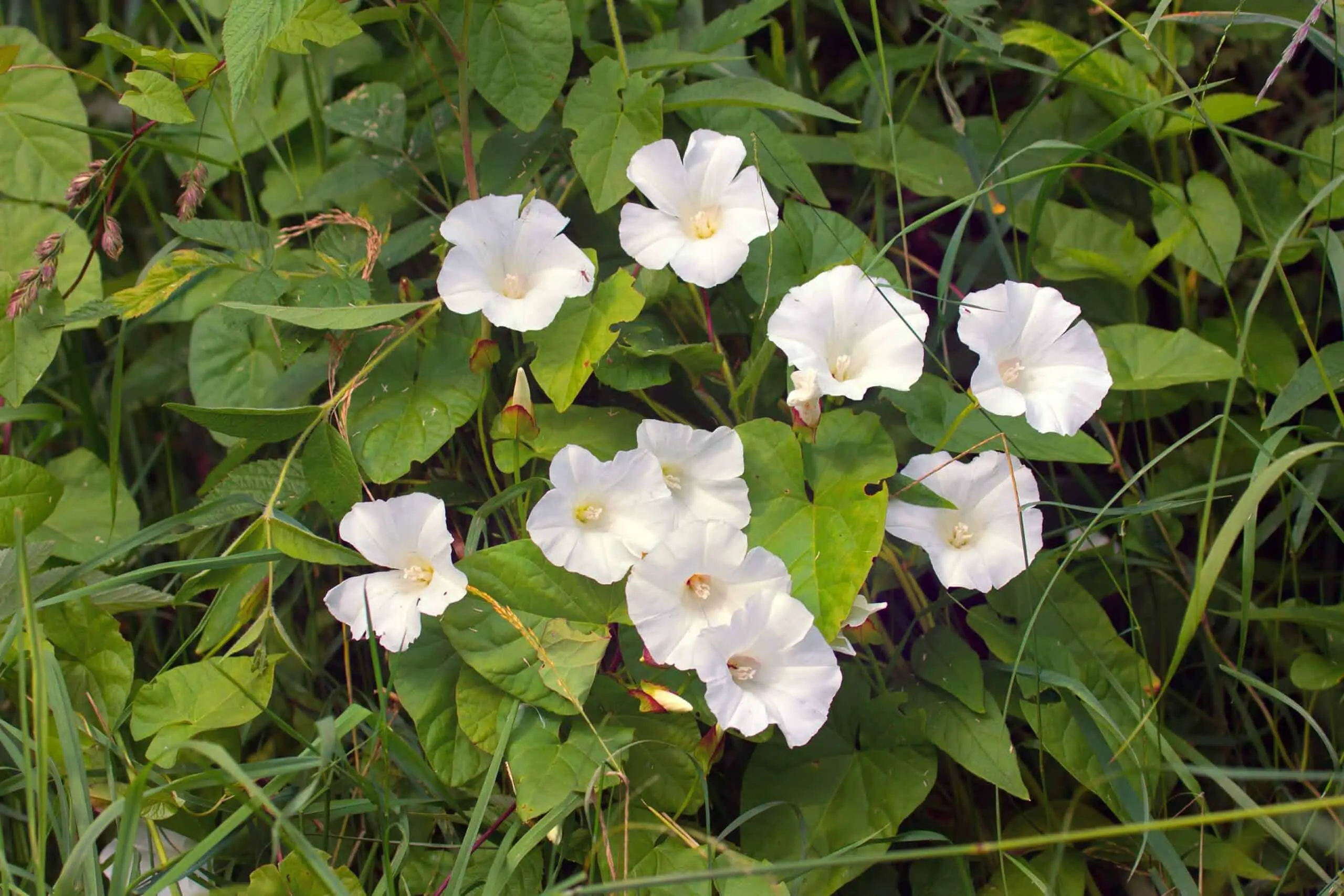
6. Houttuynia (Houttuynia cardata)
Similarities
- The leaves and shoots of these plants are likened to those of the Japanese knotweed especially when young.
Differences
- The plant grows up to 30 cm in height
- Flowers come in spring and have 4 to 6 white petals.
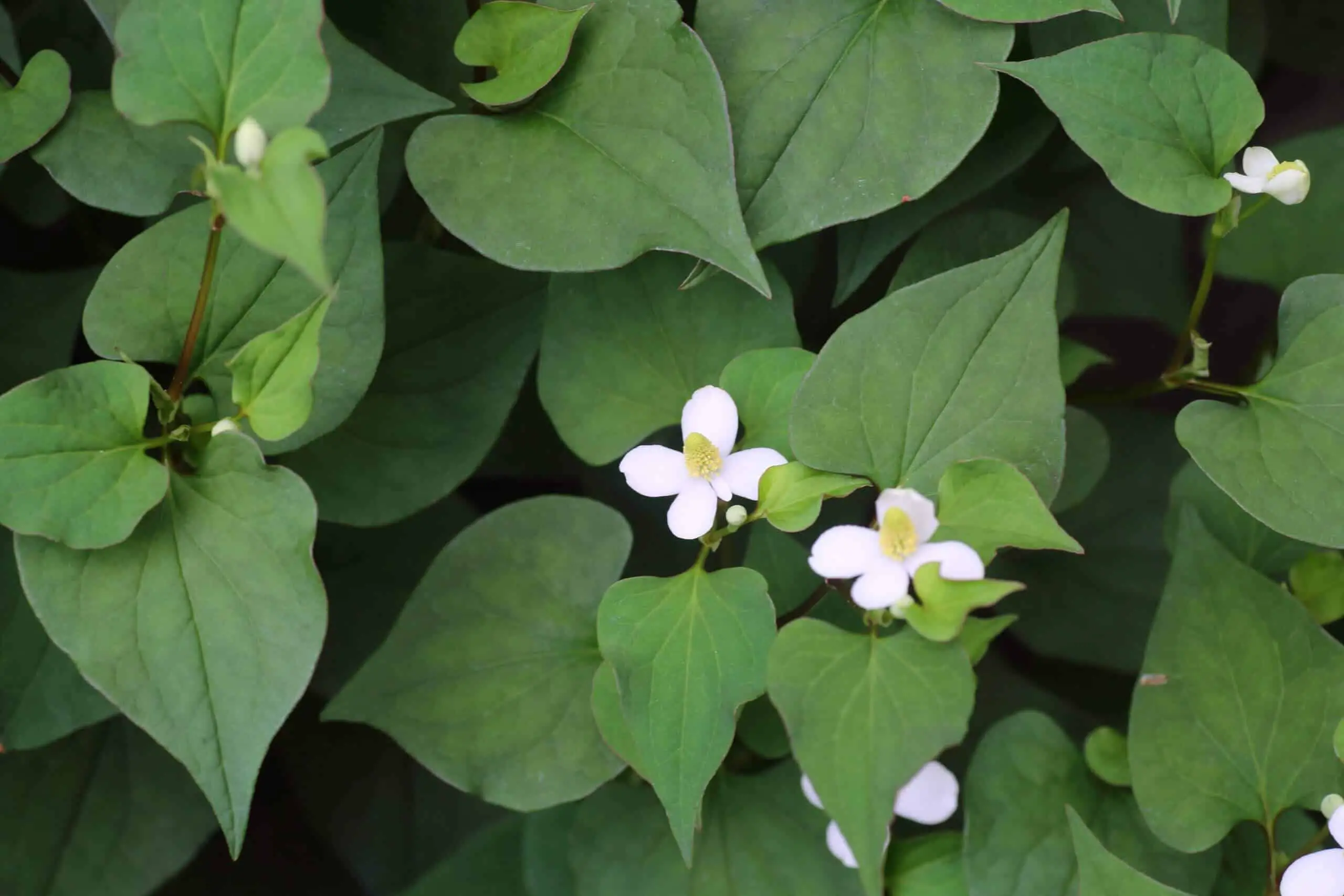
7. Russian Vine (Fallopia baldschuanica)
Similarities
- The Russian Vine belongs to the same genus as knotweed. The leaves of the vine look like those of the knotweed.
- It grows fast and is very invasive.
Differences
- The Russian vine is a climbing plant and depends on other plants for support. It twists around the hard stems of the trees around it in order to remain firm.
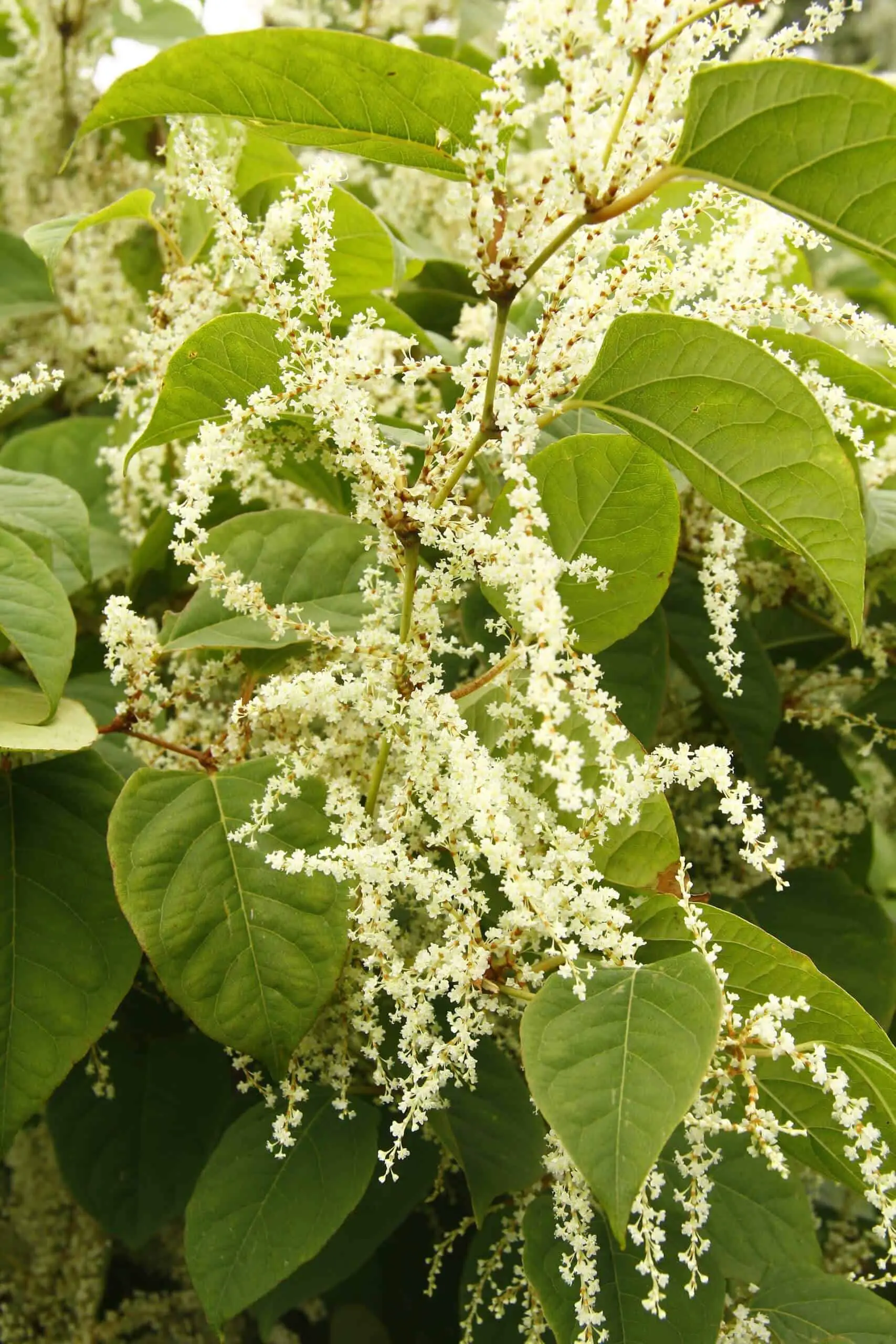
8. Lesser Knotweed
Similarities
- This ornamental species is closely related to the Japanese knotweed.
- The leaves are alternately arranged along the stem as those of Japanese knotweed.
Differences
- The leaves have longer with more visible veins as compared to those of Japanese knotweed.
- The lesser knotweed is shorter than the Japanese weed. It only grows up to 1.5 meters.
- The flowers are ball-shaped and pink in colour.
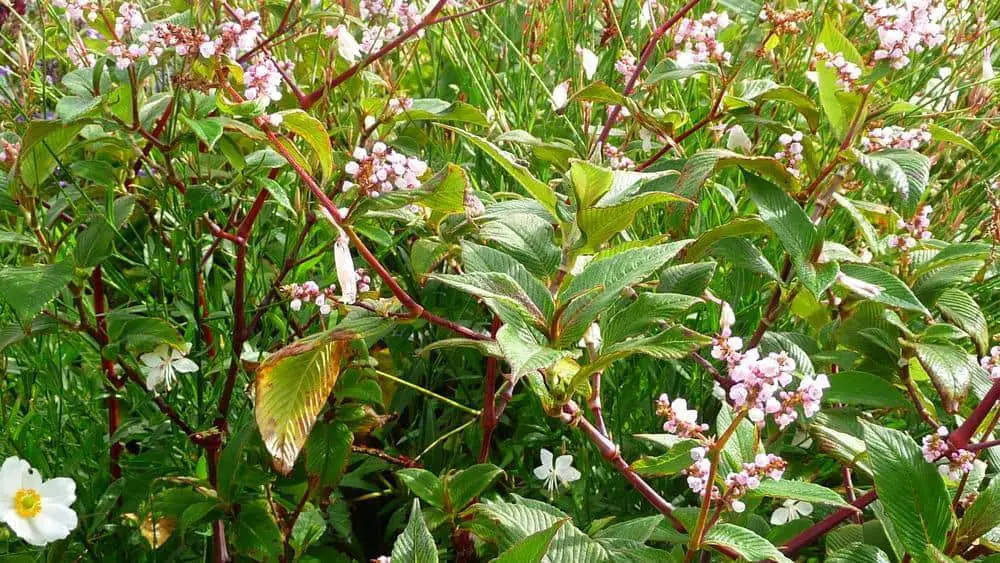
Conclusion
What Plants can be Mistaken For Japanese Knotweed?
When it comes to Japanese knotweed identification, most people will consult their smartphones. The internet can help you to spot the Japanese knotweed but it is not always accurate. As you may have noted, there are several plants mistaken for Japanese Knotweed. Your garden nightmare could be nothing to worry about!
If you suspect Japanese knotweed in your home, the best way to get the right information is to call an expert for an inspection. You may not be able to accurately distinguish the Japanese knotweed from the plants commonly mistaken for it.
Want to know more?
Knotweed Removal aims to provide the most up-to-date information, help and advice for YOU to make informed decisions. If you are unsure or uncertain about how to proceed, please reach out to us and we will gladly come back and advise you as best we can.
Governmental advice can be found here and the UK law covering the removal of Japanese Knotweed as stated under the Wildlife and Countryside Act 1981 can be found here.
The best means to contact us is via our email – hello@knotweedremoval.tips
Do not forget we have a library of blogs covering many areas relevant to Japanese Knotweed, our free downloadable How-to Guides and Product Reviews on the latest methods being employed to eradicate or remove Japanese Knotweed.
Knotweed Removal, UK

